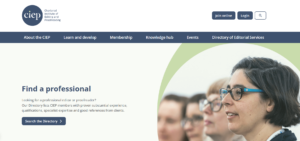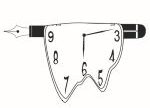Friends had read my novel manuscript. Some were creative writing lecturers, some were writers themselves, and some were readers in my genre (historical literary fiction). I’d had lots of positive feedback from them but the fifty rejections I had accumulated over the years, from agents and independent publishers, kept niggling away. Maybe my novel wasn’t any good and my friends and colleagues couldn’t bear to say it outright.
Deciding to self-publish took a lot of self-belief, but luckily I began with the right first step and struck gold. I hired an editor and she turned out to be a stellar one. Because of her, my manuscript and my attitude towards it were completely changed.
Looking for an editor
My first challenge was finding the right editor for my book, by which I meant someone who could grasp what I was trying to do, someone I could get along with, and most importantly someone with reliable and extensive industry experience. I was in the fortunate position of having saved up money for this eventuality during my years of writing, submitting and revising, so the cost was not a particularly constraining element. I went looking for the best, and I honestly think I found it.
 My method was as follows: on the directory of the Chartered Institute of Editing and Proofreading, I entered my genre and selected ‘Advanced Professional’. I then filtered the search results for people who were based in the UK in case I ended up paying for phone calls at some point down the line. I narrowed these results down to a shortlist of about ten and scrutinized their online presence. Then I checked that they were on the list of trustworthy professionals at ALLi, the organisation that represents independent authors.
My method was as follows: on the directory of the Chartered Institute of Editing and Proofreading, I entered my genre and selected ‘Advanced Professional’. I then filtered the search results for people who were based in the UK in case I ended up paying for phone calls at some point down the line. I narrowed these results down to a shortlist of about ten and scrutinized their online presence. Then I checked that they were on the list of trustworthy professionals at ALLi, the organisation that represents independent authors.
What type of editing did I need?
Having done a little of this sort of work for others, I knew that there were different levels of editing. The whole business gets confusing very quickly, however, as some of them have more than one name and sometimes the same name is used for different types of editing.
The commonest name for the highest level of edit, in other words for the fullest, most detailed job with the most feedback and direct interventions in the form of suggested changes, is a ‘developmental’ (or ‘structural’) edit. Copy editing comes next on the scale and this is very much about style and adjustments at the level of paragraph and sentence. Then it’s on down to proofreading which is the final nit-picking work of spotting typos and the like. There is also a type of edit for rougher or first drafts called manuscript assessment or manuscript critique which is designed to answer the question of whether it’s worth going on with the project, but I’d already passed that stage a long time ago.
My own requirements seemed to me to lie somewhere between a developmental and copy edit so I knew I would need to consult with the editor I chose to make sure she didn’t make suggestions so large-scale that I was not prepared to take them on.
I emailed some of the editors on my shortlist, giving details of the genre and length of my novel, the type of edit I required, and attaching a sample. I also specified a deadline. My first enquiries all came back saying they had no availability for over a year, which rather threw me.
I began again, and the next tranche of three included my future editor and two others. I had explained that I was unsure whether I needed a copy edit or a developmental edit, that my novel had been revised and rewritten about eleven times and that I had had two interventions from editors at publishing houses giving me large-scale suggestions for improvement. Asking what type of edit to go for was a genuine question but also a sort of test: could the candidates explain themselves in a way I related to?
Choosing the right editor
One of the three kept emailing short, merry messages saying she loved the sound of my novel and would get back to me soon. The second one gave me an explanation about the differences between types of editing and told me in no uncertain terms that what I wanted was a copy edit. The third (this sounds just like a fairy tale, doesn’t it?) was the perfect response and it was from my future editor.

While the others took days to reply, within hours she had sent back a detailed quote attached to a long, friendly email including all the figures for both types of edit. She said that she couldn’t tell from my 1,000-word sample whether it would need a major developmental edit and, although it might be better to go for that if possible, the decision was mine. The speed at which she replied and the clear, extensive, broad-ranging information she included tallied with what I had read in her testimonials. It took one night to sleep on the decision and I said yes.
Hearing the painful truth
I wanted to enter a big, biannual competition for which I had been long-listed twice before, and my new editor kindly agreed to do a separate edit of the opening 5,000 words in time for the competition deadline. In fact, she sent back the work a week early which helped enormously because it turned out there was a lot to do before I could enter it into the competition. She sent me two documents. One was a critique of over 2,000 words, and the other was the text marked up in red with corrections and comments. Her main criticism was that the opening was too slow and she had put a red line through about 800 of the 5,000 words, with suggestions for further cuts. I was at first shocked and resistant: she had crossed out pretty much all of my ‘darlings’ but, when I made a copy of the document without the lines and passages she had struck out, it was so much better.
Then there were the embarrassing mistakes like putting the title all in capitals and adding two spaces instead of one between sentences. These things, and others, had obviously been making my work look amateurish and if I had gone on to publish leaving them in it would have made me look incredibly stupid. Oddly, the more faults she found, the better I felt! My confidence in the manuscript grew and my editor is as skilled at praising the good as she does at finding the bad. When she said I had ‘nailed’ the use of point of view (‘well done!’) and that my book had commercial appeal, I believed her because she has 30 years’ experience in the industry, both in-house and freelance.
Going above and beyond
I loved getting my editor’s emails and she seemed to genuinely enjoy the work. A particularly brilliant example of her flexibility was when I finally came to send the whole manuscript to her then had a sudden last-minute panic about whether I had opened with the right scene. We agreed that I’d send the manuscript as it was and also an outline of the alternative opening. She addressed this, at no extra charge, and gave her view on which was best. This time her critique, for the whole manuscript, ran to over 6,000 words.
Money well spent
I paid just over £2,000 for her to edit my 92,000-word novel. The level of detail went down to putting the accents on the correct letters of French words I’d used and encompassed broad questions such as genre and potential readership. I came away with a close to publishing-ready manuscript (which I then had proofread) and the firm belief that this was a good, well-produced readable novel of a standard worthy of publication.
Unlike my friends, my editor had no personal stake in telling me exactly what was good and bad about my manuscript. She knew what to look for, how to fix it and how my book might fare on the open market. Apart from wishing I’d done it years ago, before submitting to all those agents, my only regret is that the editing process is now over and I shall miss the emails which were wise, cheering and often amusing. I’d like to think of her as my friend but I know that when I have another novel for her to edit (and yes, I’ll definitely be going back to her next time if I can afford it) she will be objective and professional in a way that my friends in real life can never be.
I hope you find an equally good editor, if and when you need one. My editor’s name is Gale Winskill and you can visit her website here.
A version of this article appeared on Medium and it can also be found on Gale’s website (she liked it a lot, but couldn’t help herself from suggesting a few changes!).
Have you had good or bad experiences with editors? Do tell me in the comments.

